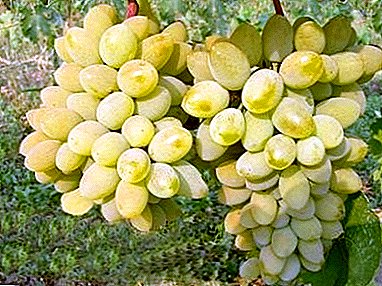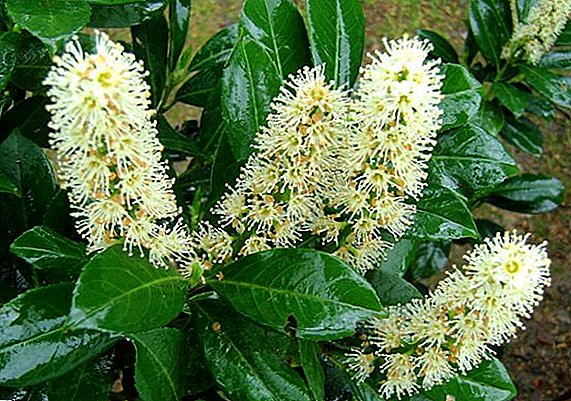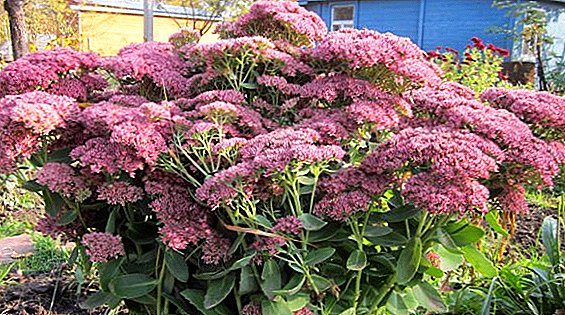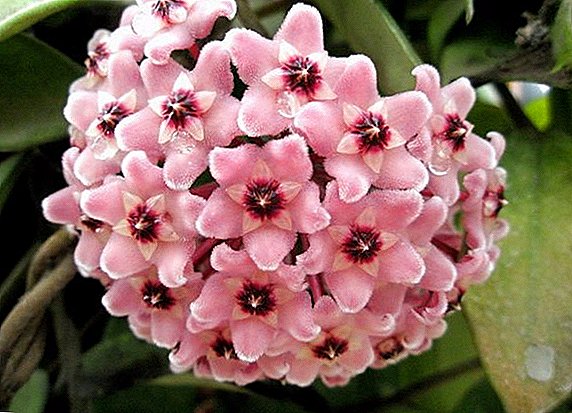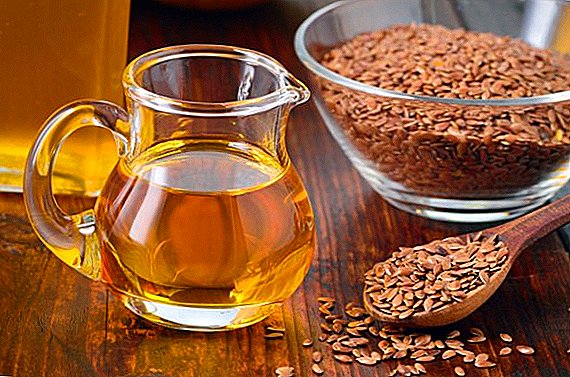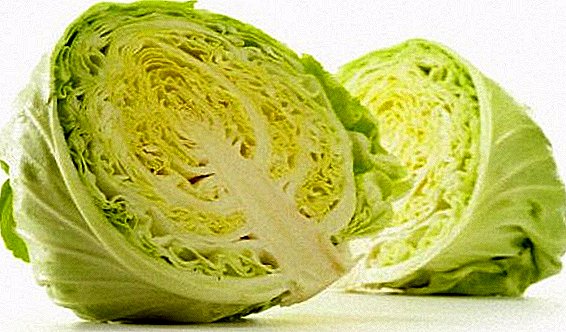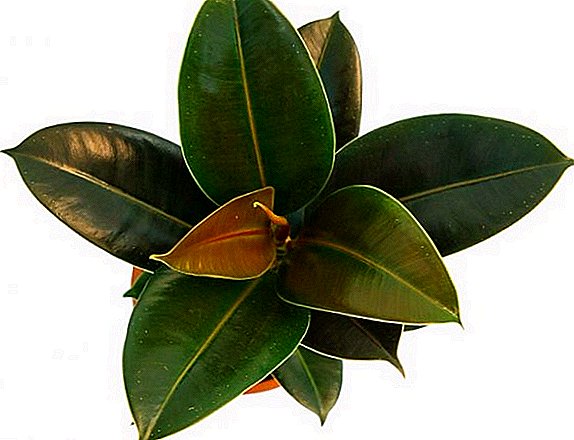 Ficus Abidjan (Ficus Abidjan) - one of the most common indoor plants, which has long won the love of gardeners.
Ficus Abidjan (Ficus Abidjan) - one of the most common indoor plants, which has long won the love of gardeners.
It looks great in the apartment and in the office, decorating the room and giving it a little exotic.
To this plant pleased the owners all year round, you need to know how to properly care for him.
Description and photos of the variety
Ficus Abidjan is an evergreen plant with a wide and massive stem and can reach a height of up to 1.5 meters. It has dense, shiny and smooth leaves in the shape of an oval and with pointed ends that grow to 25 cm in length and 18 cm in width.
The leaves of Abidjan are dark green with a central vein of a light shade. The bottom of the leaves is green, sometimes smoothly turning into burgundy. Stipules - red or burgundy.
Abidjan is a variety of rubber-ficus, learn in detail about the care, crown formation, diseases, types of rubber-bearing ficus.Abidjan’s homeland is the Asian tropics. This is reflected in the "nature" of the plant, which loves sunlight and is afraid of drafts. However, despite its tropical nature, the plant has learned very well to live in modern apartments.

Did you know? Ficus Abidjan is one of 900 species of representatives of the Mulberry family. And he owes his name to the city located in the African state of Côte d'Ivoire.
Rules for the purchase of ficus
The plant should be purchased only from trusted vendors who have certificates for their products. You should choose a strong seedling with a developed root system, with no signs of damage or disease. It is not necessary to buy a too-old copy, it will be more difficult for it to adapt to new conditions.
Choosing a seedling, shake it slightly. If at least a couple of leaves fall off, it is better not to buy this copy. Also look in the drainage hole. Darkened roots indicate their disease.
In addition, buying a new ficus is better in the warm season, since in winter or autumn it will be harder to acclimatize. 
Where to place the ficus after purchase: the best conditions
Despite the simplicity of the plant, it is necessary to provide him with favorable conditions for development. His well-being and healthy appearance will depend on it.
Learn how to water the ficus, how to pick up the soil, how to cure the ficus, how to propagate the ficus.
Selection and lighting
Ficus is a light-loving plant, so you should place it on a well-lit window sill without intense direct sunlight. It is better that the light is a little diffused. With an excess of sun, you can shade the window with a thin curtain.
If you place the plant in a dark place, it will certainly not perish, but its growth will slow down significantly.
Temperature and humidity
The ficus loves heat, so in the summer in the room where it grows, the temperature should be within 1 + 8-24 degrees. In winter, it can be a little lower - from +16 to +18 degrees. Ficus in the summer can be taken out on the eastern or western balcony; when placed on a southern plant, it is necessary to keep Ficus in no way placed on drafts, otherwise its leaves will begin to become covered with dark spots and fall off. In addition, it is advisable not to move it from one place to another.
Ficus in the summer can be taken out on the eastern or western balcony; when placed on a southern plant, it is necessary to keep Ficus in no way placed on drafts, otherwise its leaves will begin to become covered with dark spots and fall off. In addition, it is advisable not to move it from one place to another.
The plant loves moisture, so you need to often spray it and wipe the leaves with a damp sponge. Especially with low humidity (late spring and summer). And about once a month it is worthwhile to arrange a warm shower for him, having previously closed the ground.
Important! In stressful situations, for example, when changing growth conditions, the plant may begin to drop foliage. Do not worry, after acclimatization ficus will be restored.
How to care for ficus Abidjan at home
In itself, the plant is very unpretentious and hardy. Caring for it consists only in periodic watering, spring-summer feeding and pruning. Let's look at all these tasks in more detail.
Watering
Like other tropical plants, Abidjan loves water. Therefore, it is necessary to water it regularly, not allowing the land to dry out. For irrigation you need to use separated, thawed or rain water at room temperature. Summer watering regime - once or twice a week. In winter, you can water a little less.  Excess water is detrimental to the plant, because its roots can begin to rot. If this happens, the ficus should be removed from the soil, remove the damaged parts of the roots, give the plant a little dry, sanitize the roots and transplant the flower into a new soil.
Excess water is detrimental to the plant, because its roots can begin to rot. If this happens, the ficus should be removed from the soil, remove the damaged parts of the roots, give the plant a little dry, sanitize the roots and transplant the flower into a new soil.
It is easy enough to find out whether Abidjan needs watering - you need to check the ground in a pot at a depth of about 3 cm and if it is wet, then you do not need to water it. In addition to watering the soil directly, it is necessary to periodically spray the leaves from a spray bottle and wipe them with a damp sponge.
Top dressing
In order for the plant to be strong and healthy, do not forget about feeding. It is produced 1-2 times a month in the warm season (from spring to autumn) with universal fertilizers. You can alternate between organic and mineral fertilizers. You can buy such dressings in flower shops and use according to the instructions on the package.
Find out why you need and what effect have potash, phosphate, nitrogen fertilizers.
Cropping and crown formation
Under favorable conditions and a good level of light, Ficus Abidjan grows very quickly - up to half a meter per year. To avoid excessive stretching, you need to pinch it.
To do this, the main stem is pinned at a height of about 20 cm, and the lateral (10 cm long) are cut off. In this way a beautiful harmonious crown is formed. Trimming should be done in the spring, using clean tools.
There are instances that begin to branch as adults. This also needs to be considered when pruning.
Video: ficus formation
Did you know? In the southern regions very often a close relative of the ficus is a fig or fig tree. It can grow in the most unsuitable conditions. For example, at the city polyclinic of the city of Sochi, 2 huge figs grow right on the stone wall.
Plant transplant
It is better to replant the plant in a permanent pot after quarantine - 2-3 weeks after the purchase. Ficus Abidjan loves the fertile land of neutral acidity. The soil for seedlings should be soft, loose, well-saturated with oxygen.
Since the ficus grows very quickly, it may need to be transplanted into a more spacious pot about once every 2-3 years. It is important to do this carefully so as not to damage the root system. Young plants should be replanted annually.
For transplanting to the bottom of the pot is poured a drainage layer consisting of fine gravel, pebbles or drainage clay. The quality of the soil is well suited mixture of turf and peat land and river sand. You can also purchase special land for ficuses in a flower shop. The transplanted plant needs to be watered well. 
How multiply ficus
Ficus Abidjan can be propagated in two ways:
- cuttings
- taps.
In order to propagate it with taps, you need to cut the trunk of the tree into one third and place a pinch of coarse sand in the incision so that it does not grow together. Wrap this place with wet moss and polyethylene. When the roots break through the moss, the stem is cut and planted in a separate pot.
Did you know? The distant ancestors of the home ficus are the Bengal ficus - the mulberry trees growing in the jungles of India. The length of their leaves reaches a meter, and height - 30 meters. Thanks to the impressive horizontal branches, the crown of a single tree can cover with its shadow a territory of 300 square meters.Video: cuttings of ficus
Learn how to care for ficus, Benjamin ficus, microcarp.
Diseases and pests
A ficus may suffer from the following problems:
- Yellow leaves. This is probably due to an excess or lack of water. Check soil moisture before watering.
- Falling leaves. Perhaps acclimatization or lack of fertilizing soil.
- Dry and dark leaf tips. Insufficient watering and spraying or elevated temperature in the room.
- Mealy dew. The fungal disease begins as a white bloom on the leaves, on which drops then appear. Should be treated with fungicides.
- Spider mite The pest appears when there is insufficient air humidity and settles on the leaves and stems in the form of small transparent dots, which then turn yellow. As a preventive measure, spray the leaves with soapy water.
- Shchitovka. Externally, it appears brownish spots on the leaves, and later the leaves wither and fall. Rubbing leaves with dusty solution and spraying the Actellic solution will help.
- Centipedes. It is necessary to transplant the plant. The pot and the new soil are pre-sanitized.
 Ficus Abidjan is a great choice for a gardener with any experience. Luxurious appearance, uncomplicated care and rapid growth are its undoubted advantages. Under good conditions, the plant can live up to 50 years. And in rare cases, even bloom with small spherical flowers.
Ficus Abidjan is a great choice for a gardener with any experience. Luxurious appearance, uncomplicated care and rapid growth are its undoubted advantages. Under good conditions, the plant can live up to 50 years. And in rare cases, even bloom with small spherical flowers.How to care for ficus Abidjan: reviews


If you are not transplanting due to illness, then choose a pot a couple centimeters larger than before.



